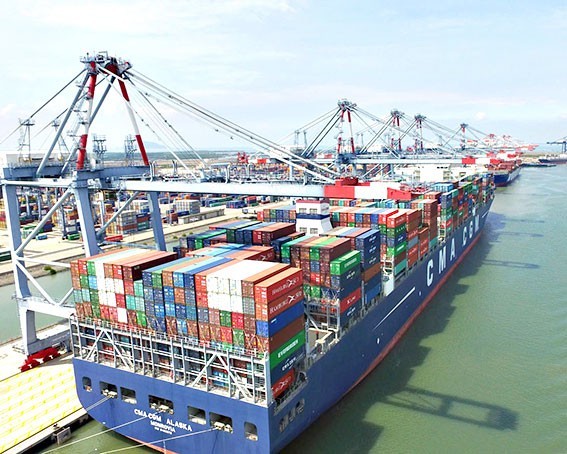The Ministry of Transport (MOT) has released a list of ICDs in Vietnam in an effort to organize container transportation in a reasonable way and improve logistics services, and to help ease traffic congestion at seaports, international ports and in large urban areas.

There are six ICDs throughout the countries, including five in the north: ICD Phuc Loc – Ninh Binh; Mong Cai ICD in Quang Ninh province; Hai Linh in Phu THo, Tan Cang Hai Phong ICD; and Dinh Vu – Quang Binh in Hai Phong. One is in the south, Tan Cang – Nhon Trach in Dong Nai.
There are also six cargo clearance points which have the same functions as ICDs.
Under the program on ICD development with a vision until 2030 which has just been approved by MOT, the ICDs in the north would have capacity of 1.3-2.2 million TEU per annum by 2025 and 3.8-5.2 million TEU by 2030.
In the central region, there will be ICDs with capacity of 124,000-322,000 TEUs and 510,000-911,000 TEUs by 2025 and 2030, respectively.
|
Under the program on ICD development with a vision until 2030 which has just been approved by MOT, the ICDs in the north would have capacity of 1.3-2.2 million TEU per annum by 2025 and 3.8-5.2 million TEU by 2030. |
In the southern region, which has many key seaports, there will be many ICDs with the capacity of 4.2-6.1 million TEU by 2025 and 9.5-13 million TEU by 2030.
MOT said it encourages the development of ICD networks in the cross-border transport corridors which connect international border gates, transport corridors connecting to large seaports in the north (Hai Phong Port) and the south (HCMC, Cai Mep – Thi Vai complex).
Vietnam will pay attention to developing ICDs in locations which can connect two transport modes, areas near industrial zones, export processing zones and first-class logistics centers.
In 2011, the ICD network development plan was approved. However, the plan is no longer suitable, and shows shortcomings which make it difficult to be implemented.
Under the plan, Vietnam would have 13 ICDs with the capacity of 6 million TEU by 2020 and 14.2 million TEU by 2030.
Experts found that the 13 projected ICDs, covering an area of 70-400 hectares, can satisfy demand in terms of services, but show problems. Container transport corridors, especially in Hanoi, Binh Duong, HCMC and Dong Nai, where there are many IZs, EPZs, the demand for ICDs to support seaports is high.
The total investment capital needed to develop ICDs by 2030 is estimated at VND20-22 trillion, which will be arranged by mobilizing capital from different sources.
MOT Deputy Minister Tran Van Cong said that it is necessary to call for investment from private investors into ICD development rather than rely on support from the State.
Chi Mai

Vietnam has many seaports but lacks roads connecting ports
The infrastructure system which connects seaports and key economic zones in coastal areas is still poor.

Deep-water seaports expect big benefits from CPTPP
VietNamNet Bridge - The fourth largest container carrier in the world is planning to provide an HCMC-Australia direct route in the near future.
 Inland container depots (ICD) play an important role in connecting transport modes, sharing the burden with seaports.
Inland container depots (ICD) play an important role in connecting transport modes, sharing the burden with seaports.